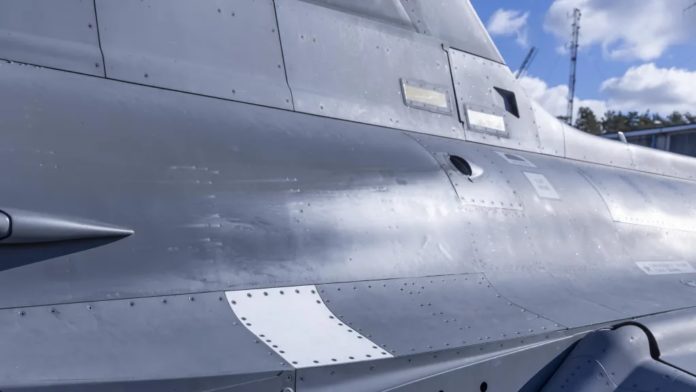The next step for Håkan Stake and his team is to look at alternative materials to PA2200, ones that are also flexible and can withstand the cold at high altitudes.
Saab has used 3D printing to produce an exterior 3D-printed part meant for a fighter aircraft. The aerospace company is no stranger to the additive manufacturing industry. As a matter of fact, four years ago, IT co-founded the AMEXCI consortium – which is also a member of AMGTA – to advance the technology. Since then, the company has been working with the AMEXCI experts to explore new AM applications.
With the goal of exploring how AM could be used in battlefield damage repair, the Swedish aerospace & defence company carried out a test flight in the skies above its facilities in Linköping, Sweden, on Friday 19th March.
The fighter aircraft Gripen was fitted with a replacement hatch that had been 3D-printed using additive manufacturing, using a nylon polymer called PA2200. Although the exact type of manufacturing process has not been revealed, it’s interesting to note that Cold Spray AM process is often regarded as one of the most used production candidates for battlefield-related applications.
Furthermore, there was no 3D computer model of the original hatch, therefore, it was removed from the aircraft and put in a scanner. This process in turn enabled 3D printing of an exact copy, tailor-made to this individual aircraft.
According to Saab, this time-saving approach opens up more possibilities for rapid repairs to fighter aircraft that have sustained damage while deployed on remote operations.
“Post-flight initial inspection of the hatch was very positive and showed no visual structural changes had occurred from the flight. The potential of this approach means that maintenance personnel in the field can get access to individually fitted spare parts and you no longer have to resort to emergency fixes nor cannibalise other broken-down aircraft for their parts, while also further reducing the small number of parts brought on a deployment. This also reduces the operational time lost in repairs,” says Håkan Stake, contract manager for support to Gripen C/D, and manager of the development project.
To further deploy this capability, further testing is required along with agreements on material standards. This milestone is the latest step in Saab’s embrace of additive manufacturing.
“This test flight of a component with operational impact is an important step as an aircraft, including all its parts, always has to meet the tough requirements of an airworthiness process. In terms of increasing operational availability in the field, additive manufacturing will be a game changer,” says Ellen Molin, senior vice president and head of Saab’s business area Support and Services.
The next step for Håkan Stake and his team are to look at alternative materials to PA2200, ones that are also flexible and can withstand the cold at high altitudes. They will also progress a container solution so that printing equipment can be taken on deployments.
Remember, you can post job opportunities in the AM Industry on 3D ADEPT Media free of charge or look for a job via our job board. Make sure to follow us on our social networks and subscribe to our weekly newsletter : Facebook, Twitter, LinkedIn & Instagram ! If you want to be featured in the next issue of our digital magazine or if you hear a story that needs to be heard, make sure you send it to contact@3dadept.com






